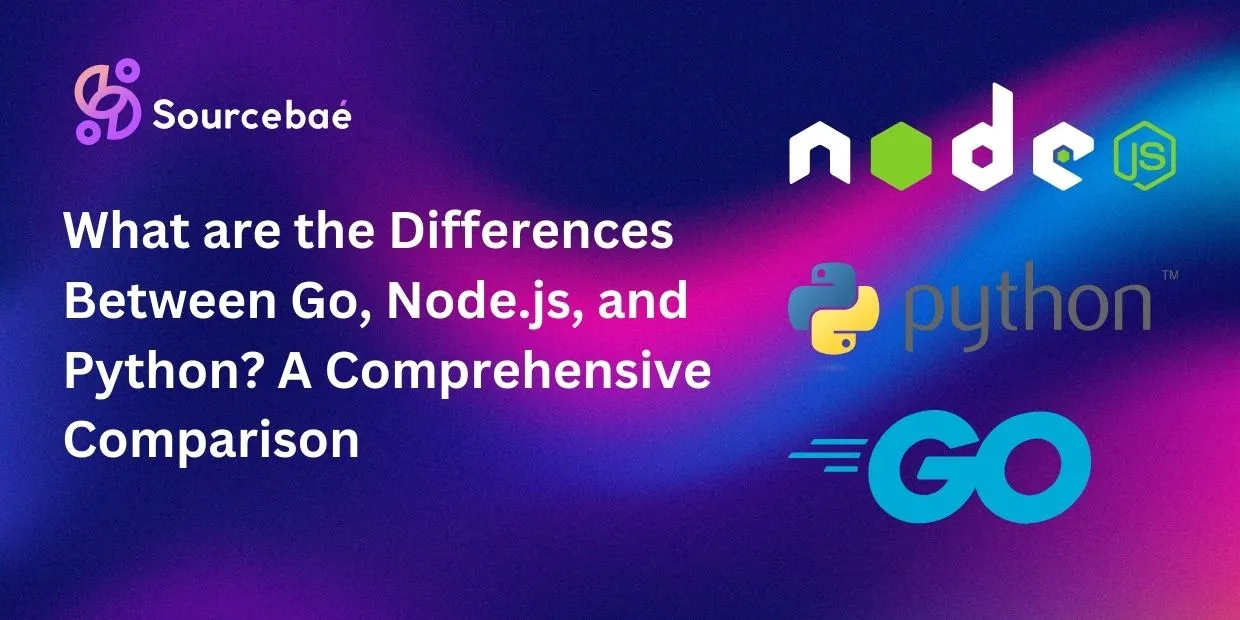When delving into the realm of programming languages, three names often stand out: Go, Node.js, and Python. Each has its unique strengths and applications, making them popular choices among developers. In this comprehensive article, we’ll dissect the differences between Go, Node.js, and Python to help you navigate the coding landscape and choose the right language for your projects.
Understanding Go, Node.js, and Python
In this section, we will introduce each programming language, shedding light on their origins, key features, and design principles.
Go: A Concurrency Powerhouse
Go, also known as Golang, is an open-source programming language developed by Google engineers. It gained popularity for its strong support for concurrency, making it efficient for building scalable and concurrent applications.
Node.js: JavaScript on the Server
Node.js is an open-source, cross-platform runtime environment that executes JavaScript code outside a web browser. It’s built on the V8 JavaScript runtime and is known for its speed and efficiency in building server-side and networking applications.
Python: The Versatile Workhorse
Python is a versatile, high-level programming language known for its simplicity and readability. It’s widely used in various domains, including web development, data analysis, artificial intelligence, and more. Python’s focus on code readability and ease of use has made it a favorite among developers.
Features Comparison
To understand the differences between Go, Node.js, and Python, let’s delve into a detailed feature comparison.
| Feature | Go | Node.js | Python |
|---|---|---|---|
| Concurrency | Strong support for concurrency | Single-threaded, asynchronous I/O | Support for threading and asyncio |
| Performance | High performance | Excellent performance | Moderate performance |
| Ease of Learning | Moderate | Easy | Easy |
| Community and Ecosystem | Growing community, expanding ecosystem | Large and active community, extensive ecosystem | Huge community, extensive ecosystem |
| Use Cases | Scalable server-side applications, cloud computing, networking | Web applications, APIs, real-time applications | Web development, data analysis, AI |
FAQ
What are the key features of Go?
Go is known for its strong concurrency support, high performance, and suitability for scalable applications. It is also recognized for its simplicity and ease of deployment.
How does Node.js differ from Python?
Node.js is primarily used for server-side applications and is built on the V8 JavaScript runtime. In contrast, Python is a versatile language widely used for web development, data analysis, and artificial intelligence.
Which language is better for beginners: Python or Node.js?
For beginners, Python is often recommended due to its simple and readable syntax. However, Node.js is also beginner-friendly, especially for those familiar with JavaScript.
Can Go be used for web development?
Yes, Go can be used for web development, and it’s particularly well-suited for building scalable and high-performance web applications.
What are the unique advantages of using Python?
Python’s strengths lie in its readability, versatility, and a vast array of libraries and frameworks, making it a preferred choice for various applications, from web development to data analysis.
Is Node.js suitable for building real-time applications?
Yes, Node.js is highly suitable for building real-time applications, such as chat applications and online gaming platforms, due to its asynchronous, event-driven nature.
Conclusion
In the realm of programming languages, Go, Node.js, and Python each have their own strengths and areas of expertise. Go shines in concurrency and scalability, Node.js excels in server-side applications, and Python stands out for its versatility and readability. By understanding the differences outlined in this article, you’ll be better equipped to choose the right language for your specific projects and requirements.
READ MORE: What is Agile Web Development?






